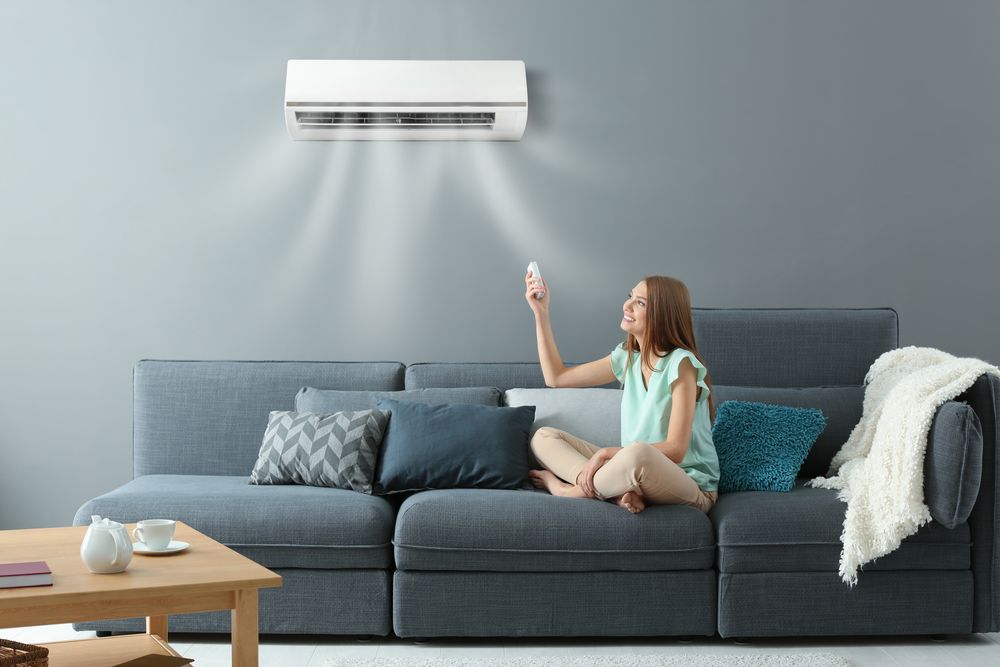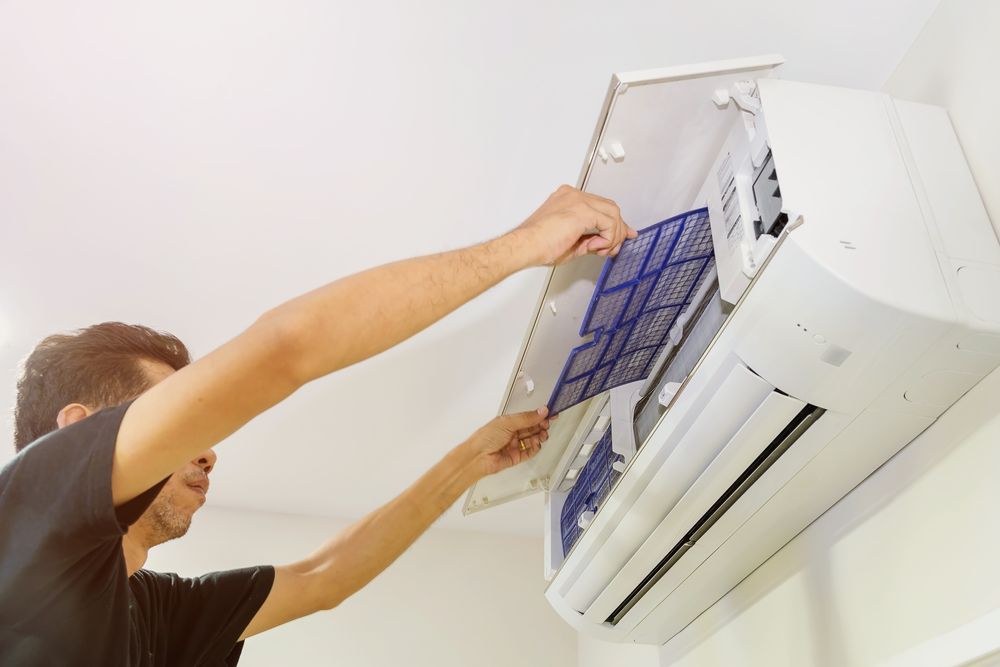

Appliances
What To Do With Old Gadgets And Tech Appliances
If you recently finished your cleaning, you probably found a few electronics you can’t justify keeping. It could be an old computer, smartphone, or a broken household appliance. What do you do with them? Most of the time, the answer is to put it back in a drawer where it’ll accumulate dust for years, or discard it in the garbage.
Throwing them in the garbage isn’t a good idea. You’ll have to do some work to keep your old gadgets out of a landfill. Most electronics are made up of recyclable components, and some contain chemicals that might harm the environment if dumped.
Old laptops, phones, and tablets, as well as unwanted household items, are cluttering up landfills across the country. So many outdated gadgets end up in landfills that people coined the term e-waste, short for electronic garbage. E-waste covers a wide range of items that contain electronic components such as TV, copier, fax machine, coffeemaker, washing machine, and others.

Here are a few smarter ways to dispose of old devices and appliances:
Recycle
Almost every city or municipality has one or two recycling days every year. Bring in all old or broken electronics on this day. If you can’t wait, seek local recycling services.
A junk removal company like dirtcheaprubbishremoval.com.au/sydney/sydney-cbd/ and others is a practical and economical option. They’ll remove and safely recycle or dispose of your old devices and appliances for you.
Here are some reasons why you should recycle:
- Many outdated electronics contain dangerous elements like mercury, beryllium, lead, polyvinyl chloride, cadmium, and chromium. E-waste pollutes both the soil and the air when it’s dumped in landfills because it leaches chemicals.
- Recycling old devices keeps them out of landfills. It also saves recyclable materials. Reusing electronics also benefits less fortunate members of your community. So, if possible, get your old equipment repaired and give them a second life.
- Electronics are a source of raw materials. Recycling saves energy—it means fewer natural resources are needed to manufacture new technologies.
- Finally, recycling saves raw materials which can be used to make new devices. Again, energy is saved, pollution is minimized, and greenhouse gas emissions are reduced.
Sell Or Trade
It’s wiser to sell old electronics than throw them away. So, why not get some additional cash by selling your outdated electronics online? Your rubbish could be someone else’s treasure.
Unwanted gadgets can be listed for free on eBay, Craigslist, and Facebook. Use online shops or local selling groups to list them. If you live in a larger city, you could even narrow it down to that particular city. You can sell or auction items on eBay and then mail them to the buyer. If your products aren’t moving as quickly as you’d like, consider local classified advertisements.
Expert tip: It’s all about timing. The ideal time to sell devices is before new products are released, so if you notice news about Apple releasing a new iPhone, it could be time to list yours since the price you may get drops by 10-20% when a new phone comes out.
Moreover, you can trade in electronics on online store websites. For example, Samsung and Apple both have trade-in systems. You can sometimes earn a discount on a new purchase or store credit. It’s less difficult than selling it personally, but you’ll get less.
You can also trade-in your old appliances on websites like Amazon. They accept trade-ins of old goods like TV streaming devices, smart speakers, and even doorbells for Amazon gift cards. If you utilize Amazon Trade-in, you’ll also get a discount on a new gadget in the same category.
Donate
Many people and locations need your old electronics, from local schools and students to veterans and soldiers. Donating computers and other tech items can be tax-deductible. Mobile phones are the easiest to donate.
Give to community groups. In addition to used laptops and related items, local domestic violence and homeless shelters occasionally seek out phones, TVs, and computers. If you’re getting rid of a working TV, check with local senior centers or assisted living homes. Also, find a local electronics collection organization. Across the country, charities collect used technology to aid their missions. Always ask about your local charity’s needs and what they accept.
Find out what your local centers require before dropping off any functioning electronics. Always ask about your local charity’s needs and what they accept. For all options, be sure to safely wipe all data before handing off the device.
Conclusion
Finding e-waste alternatives has never been easier. After all, technology is making information readily available. There’s no excuse to toss electronics. You can donate them, sell or trade them, recycle them, and others. People should do their share to protect the environment.
Appliances
Key to ROI: A Cloud-Enabled Business Transformation Mindset

Keywords: business transformation, cloud business transformation, business transformation strategy, business transformation solution, business transformation services
Cloud is not the next big thing. It is today’s reality and a key facilitator of solid business models and the technological foundation of innovation ecosystems. Businesses are aware of the potential of cloud technology. Still, fewer enterprises are supported by cloud services and applications. Why do so many people still fail to draw the connections between cloud technology and their goals for digital transformation? There is a simple answer behind that – genuine cloud business transformation necessitates a holistic approach that integrates the strategy, organization, process, and technology. Most marketers fail to do so.
Business leaders and marketers need to prioritize business transformation so that customers will benefit from new digital capabilities and enhanced goods and services. According to consulting firm McKinsey Company, “A fundamental shift in mindset toward the customer, along with operational and IT enhancements, can result in a 20 to 30 percent increase in customer satisfaction.”
A Cloud-Enabled Mindset – What does it really mean?
Adopting a cloud mindset is the first step in a successful cloud business transformation, followed by assisting in the alignment of the other components. A cloud mindset is comprised of two major components:
- The willingness to evaluate the purpose of technology and how the company will utilize it to its advantage.
- The willingness to reassess the value provided across the organization, taking into consideration the areas where culture must be aligned in order to create value more effectively and efficiently.
Cloud transformation is taking the business world by storm. The industry is expected to grow by 20.4% in 2022 up to nearly $5 billion, according to Gartner research. With 67% of all enterprise infrastructure already in the cloud, and much more slated to migrate, those who do not adopt a cloud-first mindset are destined to fall behind in the race.
How Cloud-Enabled Business Transformation Leads to Better ROI?
Cloud business transformation services can seem like a significant initial expense, but they save corporations a lot more on the back end. Running and managing your own servers is a costly and time-consuming procedure that can be easily eliminated by migrating to the cloud. It helps business owners to free up the IT team to focus on long-term business goals rather than patching and maintaining servers.
When adopting a cloud-first attitude and building a cloud-based business transformation strategy, a business leader can reap several benefits such as data protection, disaster recovery, cost savings, and more. Especially after the COVID-19 outbreak, many enterprises realized that embracing the cloud is necessary. These advantages have helped companies create resilience in the face of the epidemic and will continue to do so in the future.
What do you Gain with Cloud-Enabled Business Transformation?
- The cloud reduces the chance of theft or damage, giving you peace of mind. Cloud-based business transformation solutions have exceptional security measures in place to safeguard your data.
- Organizations that use a cloud-first approach typically save money on hosting, equipment, licensing, and personnel.
- The cloud connects your team members (whether they are in the same room or hundreds of miles distant) with solutions that enable seamless collaboration and communication for increased productivity.
- Scaling is tough to do when your apps and data are managed internally. However, the cloud can meet the changing data storage demands of both large and small enterprises.
- You may also access data saved on the cloud from anywhere at any time, which is extremely useful for allowing remote workforces.
- Going cloud-native can also assist firms in becoming more sustainable and lowering their carbon impact. The lightweight nature of cloud-native architectures goes hand in hand with reducing a company’s energy usage.
Expand Your Perspective on ROI and Risk!
Many individuals go for digital transformation, but not everyone understands the consequences. Business people think that the team will win, but they may not comprehend how or why. As a result, they may be ready to change only a few items. This might be because traditional ROI analysis does not apply well to digital transformation and, more crucially, cloud settings.
Here marketers need to understand that the cloud allows you to quickly model a project. In this way, they don’t have to spend weeks thinking out an architecture, and determining the appropriate processing or storage to obtain. Be aware that a cloud computing platform will allow business leaders to adapt judgments to changing business conditions. Rather than spending too much money on infrastructure, use the cloud to scale up and down as required. Spend time thinking about the initiative’s business value.
Bottom Line
Although many companies have adopted some type of digital transformation and cloud-based business transformation strategy, most have yet to modernize their application landscape or take advantage of cloud-native architectures. Yes, it’s true; still in 2022.
The origins of each successful enterprise are unique. Maintaining a competitive advantage requires constant innovation of new business models, goods, and services. With cloud computing, businesses can outsource tasks that aren’t very vital to their operations. Businesses should see the cloud as a competitive advantage, especially if they are interested in cloud-based digital transformation.
Appliances
4 Ways To Reduce Air Conditioning Costs

During the summer months, people always want to keep themselves cool not just for comfort but also for the sake of one’s health. However, using a fan, or staying in a well-ventilated space may not be enough. For that reason, many people choose to use air conditioners to beat the heat. Consequently, these are the months wherein our energy consumption reaches its peak because of the continued use of our air-conditioning system.
Based on statistics, six percent of all produced electricity in the United States alone is consumed by air conditioners resulting in about USD$29 billion of annual costs to homeowners. However, using an air conditioner during these summer months is inevitable, especially if you have a condition that temperature, is a factor. But like all things, everything has a price. Therefore, it’s just vital to find efficient ways to lower your energy consumption.
If you are using a malfunctioning air conditioner, many repair services can significantly help you. It’s advisable to search online for repair service providers near your area, such as ac repair Bluemont to help you with your air-conditioning concerns.
If you want a comfortable and cool home during these hot summer months with lesser energy costs, here are four cost-efficient ways to go about it.

1. Have Regular Maintenance
A poorly maintained air conditioner has a shorter lifespan and consumes more energy. There are some ways to keep your AC unit in good running condition for a longer time, you can regularly clean the components, change worn-out parts, and fix electrical connections. Likewise, you can also check the controls and refrigerant levels on your central AC system every two to three years. Moreover, you should take note that proper maintenance of the refrigerant can increase the AC unit’s efficiency by 20 percent. Altogether, doing these tips can make your air conditioning system more efficient and can reduce your electrical consumption.
2. Upgrade Your Air Conditioner
There are a lot of ways to lower the monthly costs of using air conditioners. However, you can also save a lot if you consider upgrading your cooling system. You can opt for repairs to keep them running, or you can decide to buy a new one. For instance, you can replace an old window-type air conditioner with an efficient and more modern mini-split type unit. Keep in mind that continuous use of an air conditioner that has run past its ideal lifespan (usually around ten years) can cause a considerable waste of energy. Also, choosing a more sustainable unit can lower costs by up to 20%, which can save you a lot of money. You can also use a Seasonal Energy Efficiency Ratio (SEER) rating calculator, to show you the low energy consumption rating of modern air conditioners compared to the older ones.
3. Adjust Your Thermostat
Thermostat settings should also be considered based on the size of the room and the people inside it. Managing the indoor temperature and keeping it at a particular level is why people do such. Changing the thermostat setting can significantly lower the cost of using air conditioners. For instance, you can set your thermostat between seven degrees to ten degrees Fahrenheit or lower when you plan to leave your room or when there are fewer people using it. Doing this can allow you to save as much as ten percent a year. Otherwise, it’s best to turn off your air conditioner entirely while outside if you want to cut costs.
On the other hand, this type of adjustment may not work for all people. For instance, Arizona has less humidity compared to other states. That said, you may want to be more flexible with your thermostat setting.
4. Plant Trees
According to John Krigger, an energy conservation specialist and founder and president of Saturn Resource Management, most heat that gathers within the house comes straight from the sun shining through onto the roof or windows, causing heat inside the area. As such, one way to prevent this is to plant trees around the house to prevent the sun from directly heating the home. In addition, using shrubs or trees to shade your cooling system can increase its efficiency. Furthermore, you can also help minimize climate change and carbon footprint by doing this tip.
Summing Up
It’s everybody’s desire to ward off heat during the summer season, that’s why people decide to use their air conditioning system at this time of the year. But prolonged use of this appliance will surely add up to your energy bills. Make this article your guide to continuously enjoy the comfort and cooling benefits of your air conditioners and still save up on their energy consumption.
Appliances
Lead Roofing; Pros And Cons

Lead has been the most widely roofing material and has been in use for a very long time.
It is safe to say that lead has proven itself to be the most suitable material for roofing due to its durability and resistance to varying degrees of weather conditions and can easily be molded.
Away with all the sweet sides without mentioning the defects in lead roofing as this is not a one-sided article. Well, this is the purpose of this post; to expose you to both the advantages and disadvantages of lead roofing. Also, check here if you’re about getting insurance to pay for a roof replacement.
Lead Roofing; Pros
Mouldability
According to roofing underlayment guide lead has the efficiency of being molded into any shape and form. This gives it suitability for roofing applications. This gives it an advantage over other roofing materials as it may be set on uneven or protruding areas along the roofline.
Water-Resistant
The roof has to withstand different forms of elements daily. In such a line, lead roofing is the best fit here. Lead rood is corrosion and water-resistant and will ensure your roof lasts longer. Also, it can withstand UV rays, temperature changes and offers great protection from atmospheric pollution.
All the above qualities make it last longer, thereby ensuring it can perform its functions for many years to come.
Lifespan
Due to its durability and weather resistance quality, lead roofing take much longer to lose its quality, functionality, and value over time than other roofing materials.
Most historical buildings are adorned with lead roofs, this alone proves the long lifespan it enjoys which may span over hundreds of years with no need for reinstallation. However, as much as this is laudable, without maintenance lean roof may not attain its full potentiality.
Recyclable
The demand for environmentally friendly materials has gained much prevalence recently and to ensure this, lead roofing is the way to go. Lead offers great recyclable opportunities and is largely one of the most recycled materials in the world. This alone will preclude the need for the process of new lead thereby leading to a reduction in the emission of harmful gases that may come with its production.
Appealing
Lead is aesthetically appealing with a simple and clean look that may be suited for different buildings. The sleekness of lead is a beauty not too bold but gracious in outlook.
Flashing
The flexibility of lead to be molded into any shape makes it a perfect choice for flat roof and roof flashing.
Lead Roofing; The Cons
Toxicity
Lead is a very toxic metal that could poison a liquid substance such as water. The lead would surely break down over time and this may end up polluting the water that is accumulated through lead flashing. This said water may then be transported unknowingly to other habitats that solely rely on the same. Thus resulting in dastardly effects on the environment.
Cost
Lead is a component material of many things, from the lead battery to electronic devices and even relative to buildings. It’s no gainsaying that leads roofing can be found on most historical buildings and are widely used for different purposes, this has driven up the sought for same over time. This enraged seeking of lead has drastically increased the price of the same and leads to the reduction of the same resources for consumption.
It is been said that the world is only left with untapped lead which could only serve humanity for fifty years.
Weight
Lead stress a building more than any other roofing material due to its density and weight. And this may have harmful effects on the building leading to widening cracks in the foundation of said building.
Infestation
The lead roof is prone to mold infestations. Lead roofs may buckle, crack, or become corroded from algae.

 Business4 years ago
Business4 years agoFind out how useful a loan is without a credit check

 Digital Marketing4 years ago
Digital Marketing4 years agoIs YouTube Marketing Capable of Taking Your Business to the Next Level?

 Food4 years ago
Food4 years ago5 Best and Worst Foods for Boosting Metabolism

 Business4 years ago
Business4 years agoContent Creation Tips Every Digital Manager Needs to Know

 Business3 years ago
Business3 years agoBest Workplace Upgrade

 Lifestyle4 years ago
Lifestyle4 years agoHow to Choose the Best Air Fryer for Me

 Fashion4 years ago
Fashion4 years ago8 Top Leather Jacket Picks To Try Out This Year

 Tech5 years ago
Tech5 years agoFood Lion Employee Login at ws4.delhaize.com – MyHR4U















